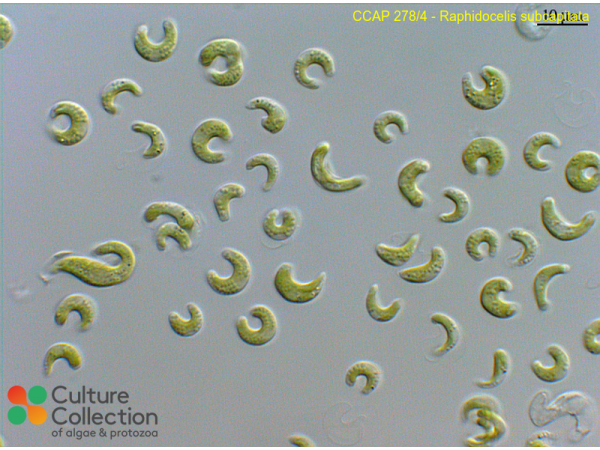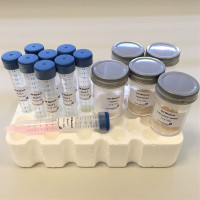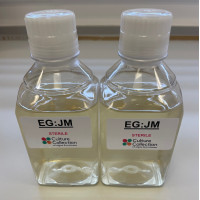References [ 78 ]
Davoren M & Fogarty AM (2005) Ecotoxicological evaluation of the biocidal agents sodium o-phenylphenol, sodium o-benzyl-p-chlorophenol, and sodium p-tertiary amylphenol. Ecotoxicology and Environmental Safety 60: 203-212.
Davoren M & Fogarty AM (2004) A test battery for the ecotoxicological evaluation of the agri-chemical Environ. Ecotoxicology and Environmental Safety 59: 116-122.
Fai PB, Grant A & Reid B (2007) Chlorophyll a fluorescence as a biomarker for rapid toxicity assessment. Environmental Toxicology and Chemistry 26(7): 1520-1531.
Hübner Y, Hoettges KF & Hughes MP (2003) Water quality test based on dielectrophoretic measurements of fresh water aglae Selenastrum capricornutum. Journal of Environmental Monitoring 5: 861-864.
Day JG (1998) Cryo-conservation of microalgae and cyanobacteria. CryoLetters S1: 7-14.
DOI: none
Roberts JF, van Egmond R & Price OR (2010) Toxicity of haloacetic acids to freshwater algae. Ecotoxicology and Environmental Safety 73: 56-61.
De Schamphelaere KAC, Forrez I, Dierckens K, Sorgeloos P & Janssen CR (2007) Chronic toxicity of dietary copper to Daphnia magna. Aquatic Toxicology 81: 409-418.
Bossuyt BTA & Janssen CR (2005) Copper regulation and homeostasis of Daphnia magna and Pseudokirchneriella subcapitata: Influence of acclimation. Environmental Pollution 136: 135-144.
Deleebeeck NME, De Schamphelaere KAC & Janssen CR (2009) Effects of Mg2+ and H+ on the toxicity of Ni2+ to the unicellular green alga Pseudokirchneriella subcapitata: Model development and validation with surface waters. Science of the Total Environment 407: 1901-1914.
van Wijk D, Gyimesi-van den Bos M, Garttener-Arends I, Geurts M, Kamstra J & Thomas P (2009) Bioavailability and detoxification of cationics: I. Algal toxicity of alkyltrimethyl ammonium salts in the presence of suspended sediment and humic acid. Chemosphere 75: 303-309.
Fai PB, Grant A & Reid BJ (2009) Compatibility of hydroxypropyl-ß-cyclodextrin with algal toxicity bioassays. Environmental Pollution 157: 135-140.
Cecutti C & Agius D (2008) Ecotoxicity and biodegradability in soil and aqueous media of lubricants used in forestry applications. Bioresource Technology 99: 8492-8496.
McLarnon-Riches CJ, Rolph CE, Greenway DLA & Robinson PK (1998) Effects of environmental factors and metals on Selenastrum capricornutum lipids. Phytochemistry 49: 1241-1247.
DOI: none
Nyström B, Björnsäter B & Blanck H (1999) Effects of sulfonylurea herbicides on non-target aquatic micro-organisms. Growth inhibition of micro-algae and short-term inhibition of adenine and thymidine incorporation in periphyton communities. Aquatic Toxicology 47: 9-22.
DOI: none
Nyström B & Blanck H (1998) Effects of the sulfonylurea herbicide metsulfuron methyl on growth and macromolecular synthesis in the green alga Selenastrum capricornutum. Aquatic Toxicology 43: 25-39.
DOI: none
Van Hoecke K, De Schamphelaere KAC, Ramirez-Garcia S, Van der Meeren P, Smagghe G & Janssen CR (2011) Influence of alumina coating on characteristics and effects of SiO2 nanoparticles in algal growth inhibition assays at various pH and organic matter contents. Environment International 37: 1118-1125.
Millington LA, Goulding KH & Adams N (1988) The influence of growth medium composition on the toxicity of chemicals to algae. Water Research 22: 1593-1597.
Fouqueray M, Dufils B, Vollat B, Chaurand P, Botta C, Abacci K, Labille J, Rose J & Garric J (2012) Effects of aged TiO2 nanomaterial from sunscreen on Daphnia magna exposed by dietry route. Environmental Pollution 163: 55-61.
Evens R, De Schamphelaere K, De Laender F & Janssen C (2012) The effects of Zn-contaminated diets on Daphnia magna reproduction may be related to Zn-induced changes of the dietary P content rather than to the dietary Zn content itself. Aquatic Toxicology 110-111: 9-16.
Verheyen L, Merckx R & Smolders E (2012) A resin-buffered nutrient solution for controlling metal speciation in the algal bottle assay. Aquatic Toxicology 114-115: 200-205.
Evens R, De Schamphelaere KAC, Balcaen L, Wang Y, De Roy K, Resano M, Flórez M, Boon N, Vanhaecke F & Janssen CR (2012) The use of liposomes to differentiate between the effects of nickel accumulation and altered food quality in Daphnia magna exposed to dietary nickel. Aquatic Toxicology 109: 80-89.
Evens R, De Schamphelaere KAC, Balcaen L, Wang Y, De Roy K, Resano M, del Rosario Flórez M, Van der Meeren P, Boon N, Vanhaecke F & Janssen CR (2011) Liposomes as an alternative delivery system for investigating dietary metal toxicity to Daphnia magna. Aquatic Toxicology 105: 661-668.
Pavlic Z, Vidakovic-Cifrek Z & Puntaric D (2005) Toxicity of surfactants to green microalgae Pseudokirchneriella subcapitata and Scenedesmus subspicatus and to marine diatoms Phaeodactylum tricornutum and Skeletonema costatum. Chemosphere 61: 1061-1068.
Leboulanger C, Rimet F, Heme de Lacotte M & Berard A (2001) Effects of atrazine and nicosulfuron on freshwater microalgae Environment International 26: 131-135.
DOI: none
Della Greca M, Pinto G, Pistillo P, Pollio A, Previtera L & Temussi F (2008) Biotransformation of ethinylestradiol by microalgae. Chemosphere 70: 2047-2053.
Andreozzi R, Marotta R, Pinto G & Pollio A (2002) Carbamazepine in water: Persistence in the environment, ozonation treatment and preliminary assessment on algal toxicity. Water Research 36: 2869-2877.
DOI: none
Walker HL & Higginbotham LR (2000) An aquatic bacterium that lyses cyanobacteria associated with off-flavor of channel catfish (Ictalurus punctatus). Biological Control 18: 71-78.
Narwani A & Mazumder A (2010) Community composition and consumer identity determine the effect of resource species diversity on rates of consumption. Ecology 91: 3441-3447.
Carr OJ & Goulder R (1990) Fish-farm effluents in rivers II. Effects on inorganic nutrients, algae and the macrophyte Ranunculus penicillatus. Water Research 24: 639-647.
DOI: none
Schroeder JM, Booton GC, Hay J, Niszi IA, Seal DV, Markus MB, Fuerst PA & Byers TJ (2001) Use of subgenic 18S ribosomal DNA PCR and sequencing for genus and genotype identification of Acanthamoebae from humans with keratitis and from sewage sludge. Journal of Clinical Microbiology 39: 1903-1911.
Hochmuth JD, Asselman J & De Schamphelaere KAC (2014) Are interactive effects of harmful algal blooms and copper pollution a concern for water quality management? Water Research 60: 41-53.
Kolar B, Arnus L, Jeretin B, Gutmaher A, Drobne D & Durjava MK (2014) The toxic effect of oxytetracycline and trimethoprim in the aquatic environment. Chemosphere 115: 75-80.
Machado MD & Soares EV (2014) Modification of cell volume and proliferative capacity of Pseudokirchneriella subcapitata cells exposed to metal stress. Aquatic Toxicology 147: 1-6.
Sjollema SB, van Beusekom SAM, van der Geest HG, Booij P, de Zwart D, Vethaak AD & Admiraal W (2014) Laboratory algal bioassays using PAM fluorometry: Effects of test conditions on the determination of herbicide and field sample toxicity. Environmental Toxicology and Chemistry 33: 1017-1022.
Goncalves AL, Simoes M & Pires JCM (2014) The effect of light supply on microalgal growth, CO2 uptake and nutrient removal from wastewater. Energy Conversion and Management 85: 530-536.
Verheyen L, Versieren L & Smolders E (2014) Natural dissolved organic matter mobilizes Cd but does not affect the Cd uptake by the green algae Pseudokirchneriella subcapitata (Korschikov) in resin buffered solutions. Aquatic Toxicology 154: 80-86.
Baken S, Nawara S, Van Moorleghem C & Smolders E (2014) Iron colloids reduce the bioavailability of phosphorous to the green alga Raphidocelis subcapitata. Water Research 59: 198-206.
De Schamphelaere KAC, Nys C & Janssen CR (2014) Toxicity of lead (Pb) to freshwater green algae: Development and validation of a bioavailability model and inter-species sensitivity comparison. Aquatic Toxicology 155: 348-359.
Van Doorslaer X, Haylamicheal ID, Dewulf J, Van Langenhove H, Janssen CR & Demeestere K (2014) Heterogeneous photocatalysis of moxifloxacin in water: Chemical transformation and ecotoxicity. Chemosphere 119: S75-S80.
Mater N, Geret F, Castillo L, Faucet-Marquis V, Albasi C & Pfohl-Leszkowicz A (2014) In vitro tests aiding ecological risk assessment of ciprofloxacin, tamoxifen and cyclophosphamide in range of concentrations released in hospital wastewater and surface water. Environment International 63: 191-200.
Magdaleno A, Saenz ME, Juárez AB & Moretton J (2015) Effects of six antibiotics and their binary mixtures on growth of Pseudokirchneriella subcapitata. Ecotoxicology and Environmental Safety 113: 72-78.
Machado MD, Lopes AR & Soares EV (2015) Responses of the alga Pseudokirchneriella subcapitata to long-term exposure to metal stress. Journal of Hazardous Materials 296: 82-92.
Del Río E, Armendáriz A, García-Gómez E, García-González M & Guerrero MG (2015) Continuous culture methodology for the screening of microalgae for oil. Journal of Biotechnology 195: 103-107.
Goncalves AL, Pires JCM & Simoes M (2016) Biotechnological potential of Synechocystis salina co-cultures with selected microalgae and cyanobacteria: Nutrients removal, biomass and lipid production. Bioresource Technology 200: 279-286.
Nys C, Janssen CR, Van Sprang P & De Schamphelaere KAC (2015) The effect of pH on chronic aquatic Ni toxicity is dependent on the pH itself: extending the chronic Ni bioavailability models Environmental Toxicology and Chemistry 35: 1097-1106.
Hochmuth JD, Janssen CR & De Schamphelaere KAC (2015) Temperature and food concentration have limited influence on the mixture toxicity of copper and Microcystis aeruginosa to Daphnia magna. Environmental Toxicology and Chemistry 35: 742-749.
Mouchet F, Gancet C, Flahaut E, Pinelli E, Boutonnet J & Gauthier L (2016) International standardized procedures for in vivo evaluation of multi-walled carbon nanotube toxicity in water. Toxicological and Environmental Chemistry 98: 829-847.
Goncalves AL, Rodrigues CM, Pires JCM & Simoes M (2016) The effect of increasing CO2 concentrations on its capture, biomass production and wastewater remediation by microalgae and cyanobacteria. Algal Research 14: 127-136.
Cerrillo C, Barandika G, Igartua A, Areitioaurtena O & Mendoza G (2016) Towards the standardization of nanoecotoxicity testing: Natural organic matter 'camouflages' the adverse effects of TiO2 and CeO2 nanoparticles on green microalgae. Science of the Total Environment 543: 95-104.
Gao C, De Schamphelaere KAC & Smolders E (2016) Zinc toxicity to the alga Pseudokirchneriella subcapitata decreases under phosphate limiting growth conditions. Aquatic Toxicology 173: 74-82.
Guo J, Selby K & Boxall A (2016) Comparing the sensitivity of chlorophytes, cyanobacteria and diatoms to major-use antibiotics. Environmental Toxicology and Chemistry 35: 2587-2596.
Biruk LN, Moretton J, Fabrizio de Iorio A, Weigandt C, Etcheverry J, Filippetto J & Magdaleno A (2017) Toxicity and genotoxicity assessment in sediments from the Matanza-Riachuelo river basin (Argentina) under the influence of heavy metals and organic contaminants Ecotoxicology and Environmental Safety 135: 302-311.
Nys C, Van Regenmortel T, Janssen CR, Blust R, Smolders E & De Schamphelaere KAC (2016) Comparison of chronic mixture toxicity of Ni-Zn-Cu and Ni-Zn-Cu-Cd mixtures between Ceriodaphnia dubia and Pseudokirchneriella subcapitata. Environmental Toxicology and Chemistry 36: 1056-1066.
Yamagishi T, Yamaguchi H, Suzuki S, Horie Y & Tatarazako N (2017) Cell reproductive patterns in the green alga Pseudokirchneriella subcapitata (=Selenastrum capricornutum) and their variations under exposure to the typical toxicants potassium dichromate and 3,5-DCP PLoS ONE 12: e0171259.
Yamagishi T, Horie Y & Tatarazako N (2017) Synergism between macrohalide antibiotics and the azole fungicide ketoconazole in growth inhibition testing of the green alga Pseudokirchneriella subcapitata. Chemosphere 174: 1-7.
Krienitz L, Bock C, Nozaki H & Wolf M (2011) SSU rRNA gene phylogeny of morphospecies affiliated to the bioassay alga "Selenastrum capricornutum" recovered the polyphyletic origin of crescent-shaped chlorophyta. Journal of Phycology 47: 880-893.
Van Regenmortel T, Berteloot O, Janssen CR & De Schamphelaere KAC (2017) Analyzing the capacity of the Daphnia magna and Pseudokirchneriella subcapitata bioavailability models to predict chronic zinc toxicity at high pH and low Ca concentrations and formulation of a generalized bioavailability model (gBAM) for D. magna. Environmental Toxicology and Chemistry -: -.
Kim JW, Rehmann L & Ray MB (2017) Development of microalgal bioassay based on the community level physiological profiling (CLPP). Algal Research 25: 47-53.
Joo JH, Wang P, Park BS, Byun JH, Choi HJ, Kim SH & Han MS (2017) Improvement of cyanobacterial-killing biologically derived substances (BDSs) using an ecologically safe and cost-effective naphthoquinone derivative. Ecotoxicology and Environmental Safety 141: 188-198.
Van Regenmortel T & De Schamphelaere KAC (2018) Mixtures of Cu, Ni, and Zn act mostly noninteractively on Pseudokirchneriella subcapitata growth in natural waters. Environmental Toxicology and Chemistry 37: 587-598.
Mennillo E, Arukwe A, Monni G, Meucci V, Intorre L & Pretti C (2018) Ecotoxicological Properties of Ketoprofen and the S(+)-Enantiomer (Dexketoprofen): Bioassays in Freshwater Model Species and Biomarkers in Fish PLHC-1 Cell Line Environmental Toxicology and Chemistry 37: 201-212.
Lee HW, Park BS, Joo JH, Patidar SK, Choi HJ, Jin ES & Han MS (2018) Cyanobacteria-specific algicidal mechanism of bioinspired naphthoquinone derivative, NQ 2-0 Scientific Reports 8: 11595.
Kim JW, Ray MB & Rehmann L (2018) Assessment of water samples with complex compositions using microalgal bioassay based on the community level physiological profiling (CLPP) Journal of Environmental Management 224: 310-314.
Kim Y, Son J, Mo HH, Lee YS & Cho K (2018) Modeling the influence of initial density and copper exposure on the interspecific competition of two algal species Ecological Modelling 383: 160-170.
Aderemi AO, Novais SC, Lemos MF, Alves LM, Hunter C & Pahl O (2018) Oxidative stress responses and cellular energy allocation changes in microalgae following exposure to widely used human antibiotics Aquatic Toxicology 203: 130-139.
Carusso S, Juárez AB, Moretton J & Magdaleno A (2018) Effects of three veterinary antibiotics and their binary mixtures on two green alga species Chemosphere 194: 821-827.
de Baat ML, Bas DA, van Beusekom SAM, Droge STJ, van der Meer F, de Vries M, Verdonschot PFM & Kraak MHS (2018) Nationwide screening of surface water toxicity to algae Science of the Total Environment 645: 780-787.
Bestion E, García-Carreras B, Schaum CE, Pawar S & Yvon-Durocher G (2018) Metabolic traits predict the effects of warming on phytoplankton competition Ecology Letters 21: 655-664.
Fettweis A, De Schamphelaere K & Smolders E (2018) Zinc toxicity to Daphnia magna in a two‐species microcosm can be predicted from single‐species test data: The effects of phosphorus supply and pH Environmental Toxicology and Chemistry 37: 2153-2164.
Machado MD & Soares EV (2019) Impact of erythromycin on a non-target organism: Cellular effects on the freshwater microalga Pseudokirchneriella subcapitata Aquatic Toxicology 208: 179-186.
Sousa CA, Soares HMVM & Soares EV (2018) Toxic effects of nickel oxide (NiO) nanoparticles on the freshwater alga Pseudokirchneriella subcapitata Aquatic Toxicology 204: 80-90.
Albini D, Fowler MS, Llewellyn C & Tang KW (2019) Reversible colony formation and the associated costs in Scenedesmus obliquus Journal of Plankton Research -: -.
O'Neill EA, Rowan NJ & Fogarty AM (2019) Novel use of the alga Pseudokirchneriella subcapitata, as an early-warning indicator to identify climate change ambiguity in aquatic environments using freshwater finfish farming as a case study Science of the Total Environment 692: 209-218.
Sousa CA, Soares HMVM & Soares EV (2019) Chronic exposure of the freshwater alga Pseudokirchneriella subcapitata to five oxide nanoparticles: Hazard assessment and cytotoxicity mechanisms Aquatic Toxicology 214: 105265.
Kim Y, Son J, Lee YS, Wee J, Lee M & Cho K (2020) Temperature-dependent competitive advantages of an allelopathic alga over non-allelopathic alga are altered by pollutants and initial algal abundance levels Scientific Reports 10: 4419.
Fettweis A, Bergen B, Hansul S, De Schamphelaere K & Smolders E (2021) Correlated Ni, Cu and Zn sensitivities of 8 freshwater algal species and consequences for low-level metal mixture effects Environmental Toxicology and Chemistry 40(7): 2013-2023.
Al Ketife AMD & AlMomani F (2024) Optimizing biofuel production from algae using four-element framework: Insights for maximum economic returns Energy Reports 12: 1254-1268.
Bogusz A, Tomczyk B, Trzcinska M, Miroslaw B & Gworek B (2024) Effect of zeolites on the reduction of the ecotoxicity of carbamazepine in the environment Ecotoxicology and Environmental Safety 277: 116320.









